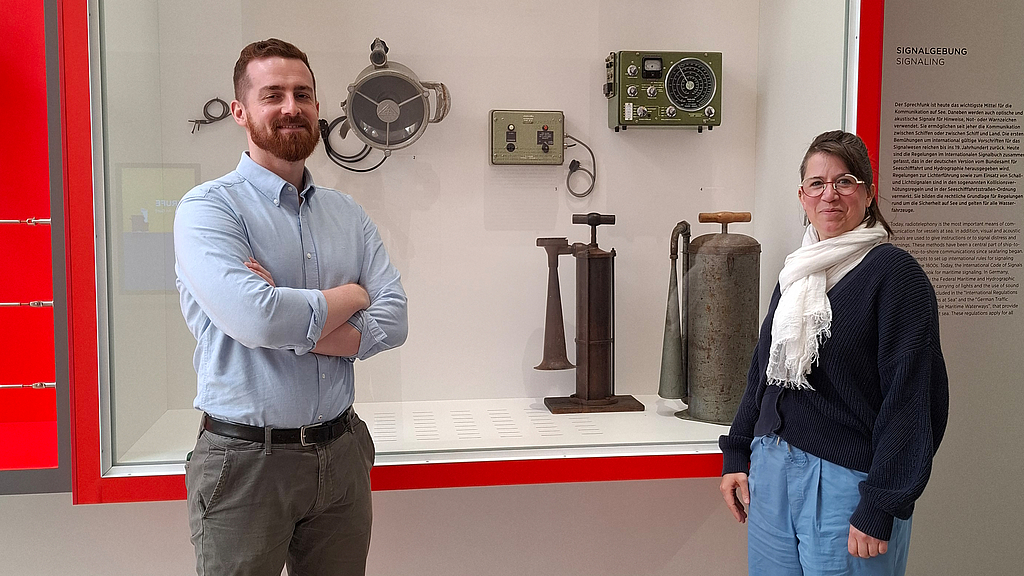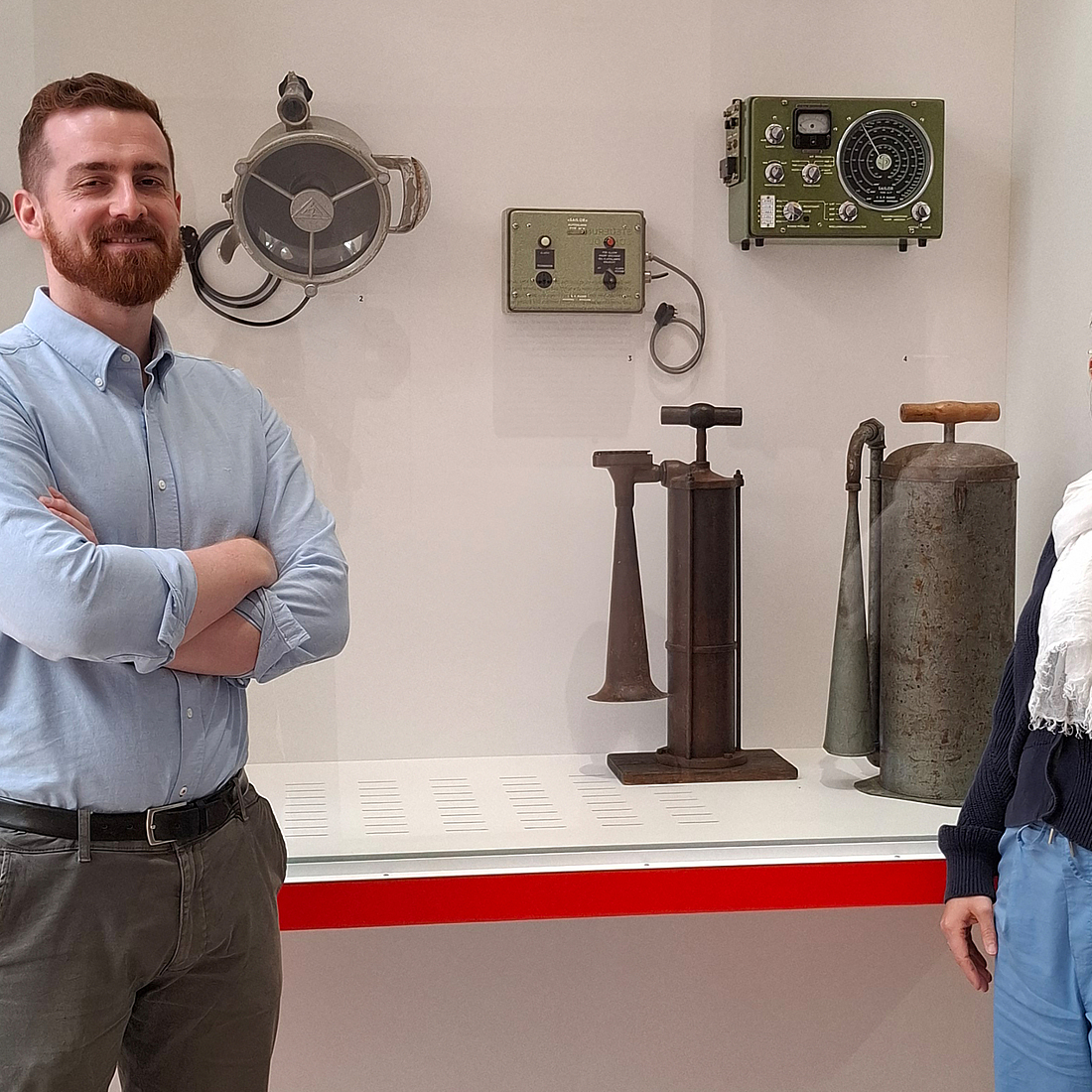Tin Cugelj: What does a maritime museum sound like?
Dr. Cugelj, you are a musicologist at the University of Nottingham in Great Britain. What brings you to the Maritime Museum?
Dr. des. Tin Cugelj: I am a historical trombonist, historical musicologist and a cultural historian of sound at the University of Nottingham (UK). My project in Nottingham (SOUNDSHIP) looks at how sound and music influenced community dynamics aboard early modern pilgrim ships - in short, how sound created, retained, and dismissed temporary multinational communities aboard ships - but also what did the travelers sing and play! This is exactly where my and Amandine's research overlaps: we are both interested in sounds on/of the ship and their relationship to the people onboard... and exactly that brings me to Bremerhaven!
What kind of project are you working on together with Dr. Amandine Colson?
Amandine and I are exploring the ways of interacting with the museum public through the museum artefacts and senses, namely sound. We chose to combine soundwalking, sonic postcards, and sensory imagination as ethnographic practices that we believe will enable the beholder to maximally engage with the observed museum object in a creative and somewhat playful way.
First, we chose several interesting objects throughout the museum permanent exhibition and we delved deep into their histories. Inspired by the primary sources talking about the objects or experiences related to the objects, we wrote narratives that capture the objects' histories in a variety of ways: some speak with the object, some speak through the object, and some speak as if the object would speak itself! To that physical and imaginative experience, we provided "a soundtrack", so to say, that separates the beholder from their present and immerses them into the observed object's past - bringing them truly close to the object itself.
In that way - because the beholder's touch is triggered by interacting with the physical postcard, their sense of vision and imagination by deep reading, and their hearing by the provided soundtrack - the beholder's sensorium is engaged with that of the object in multiple ways, providing them a deep understanding of the object without touching it or holding it in their hands!
You are at the museum for a week, which exhibits and archives did you take a closer look at for your project?
A very short week, if I may add! I have since explored all the exhibitions the Museum has, and delved deep into the library. The objects that I was particularly drawn to and that ended on the postcards are, of course, the Bremen cog, a mysterious figurehead "Martha", the Grönland 1868 model, and the fascinating triple-expansion steam engine. To craft the narratives, we were inspired by the archive and library holdings, the unforgettable 18th century travel book of Caroline von Aschen (DSM Archive), the travel book of Friedrich Brandt from 1841, the fascinating Tagebuch of Meteor's captain Fritz Spieß, Karl Helbig's unique Seefahrt von den Feuern (published 1987), and Louis le Bailly's The Man Around the Engine, both portraying the rarely recorded historical narratives - those of the steam engine room workers!

Credit: DSM / Annica Müllenberg

